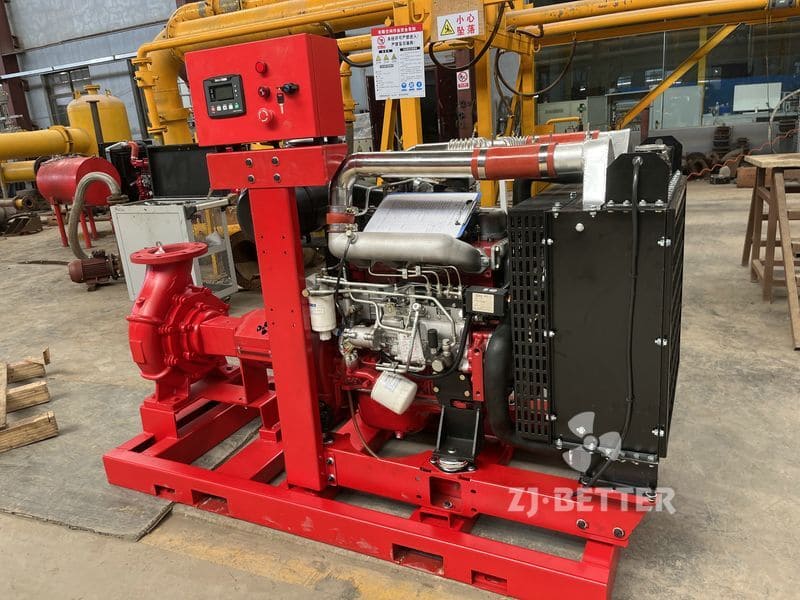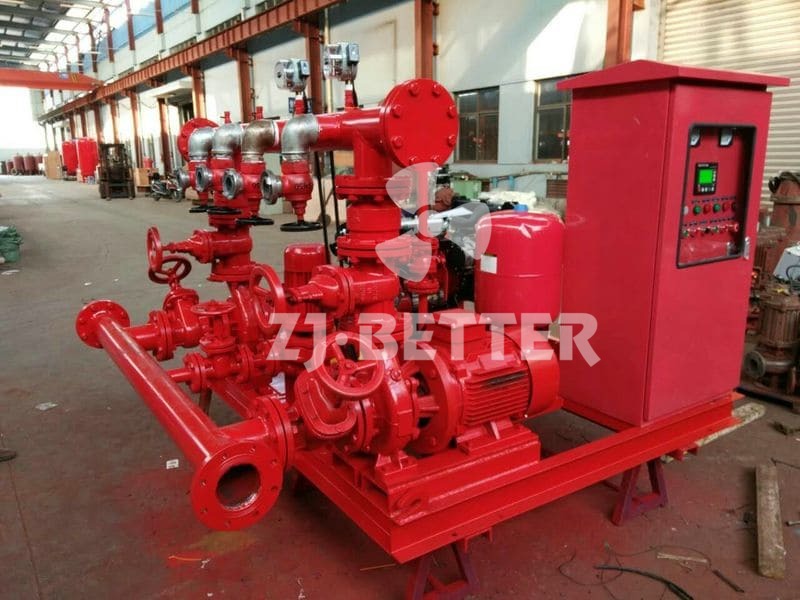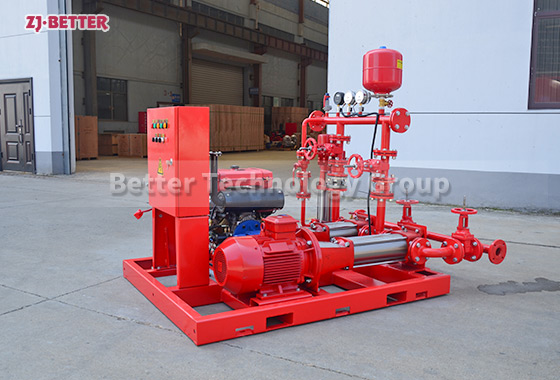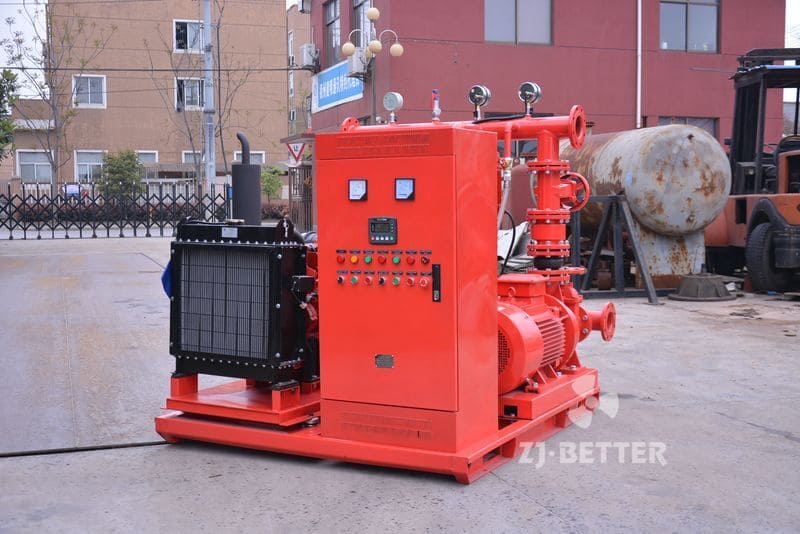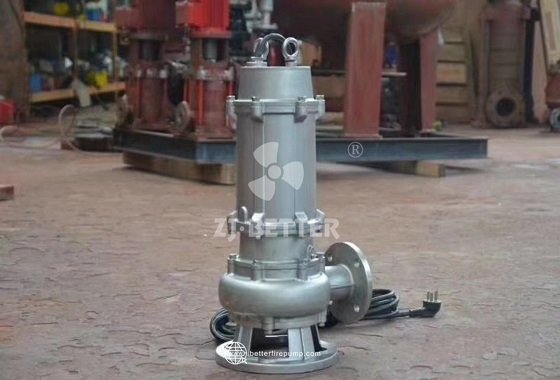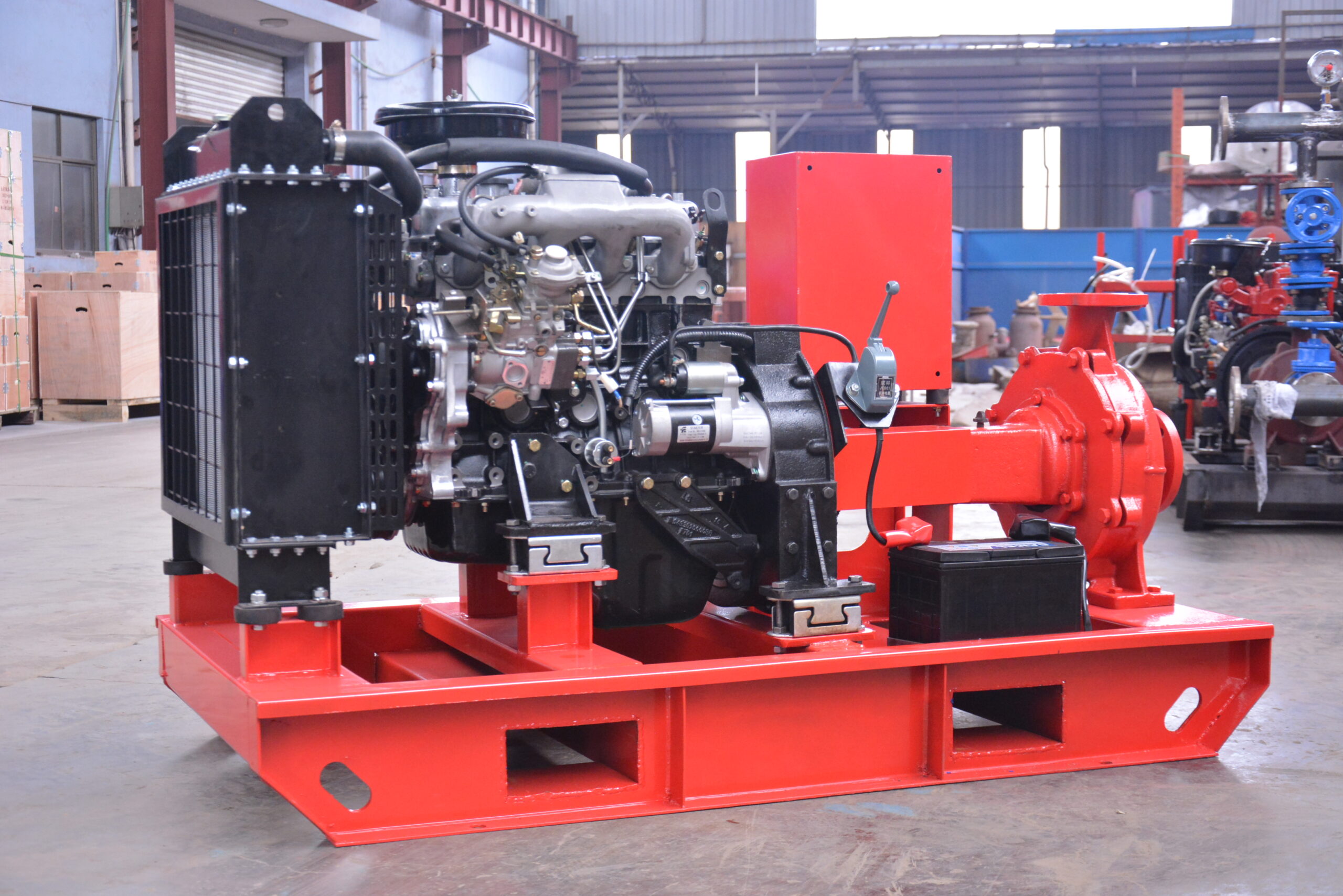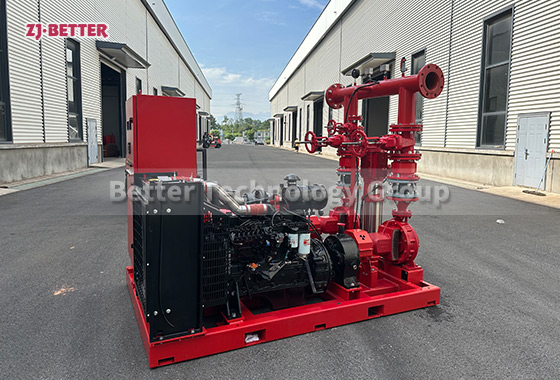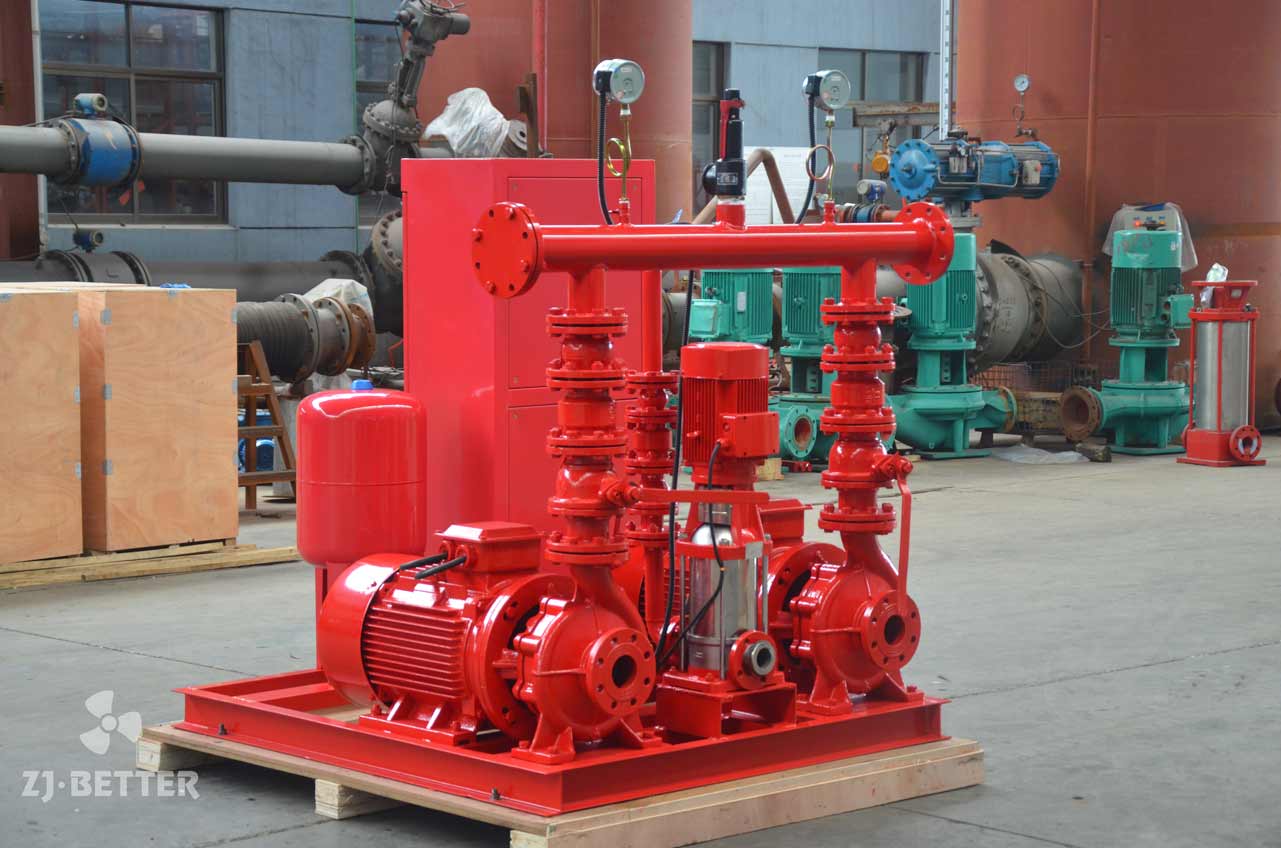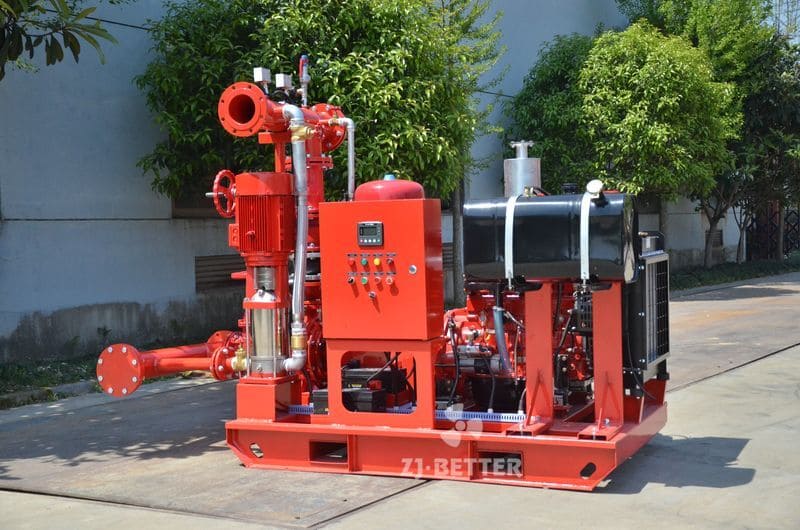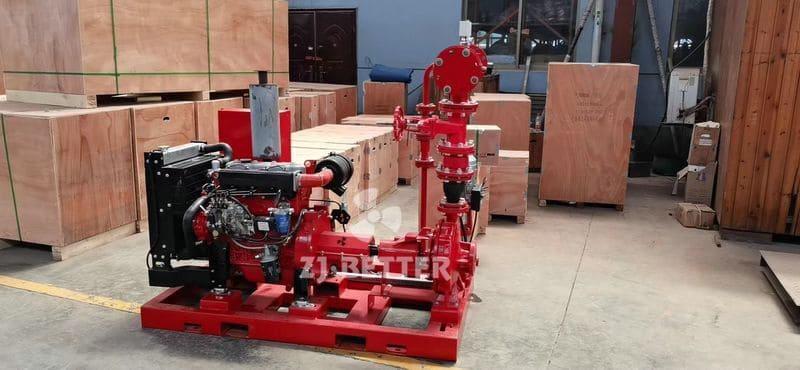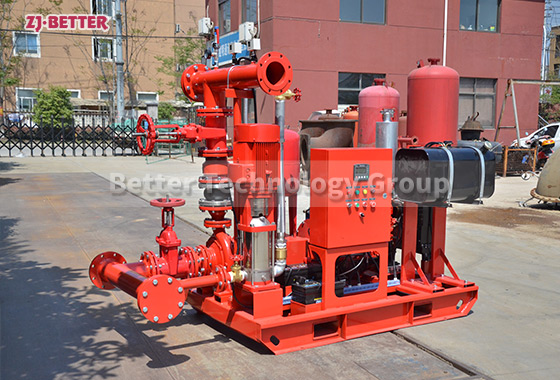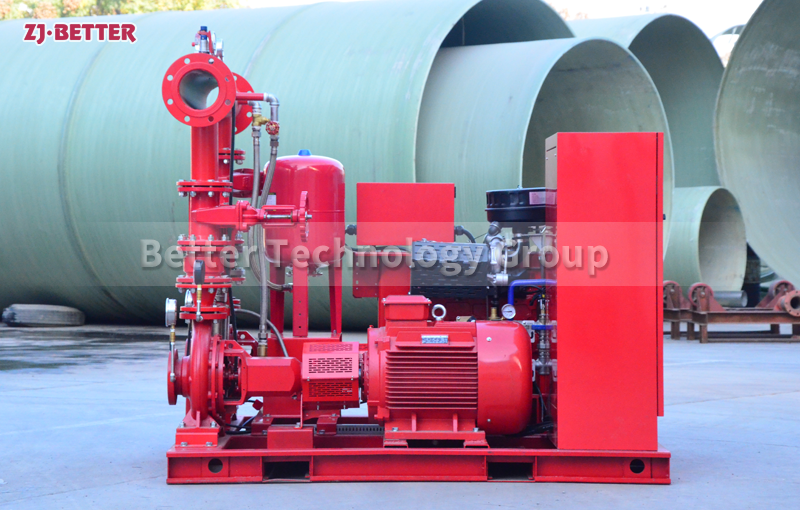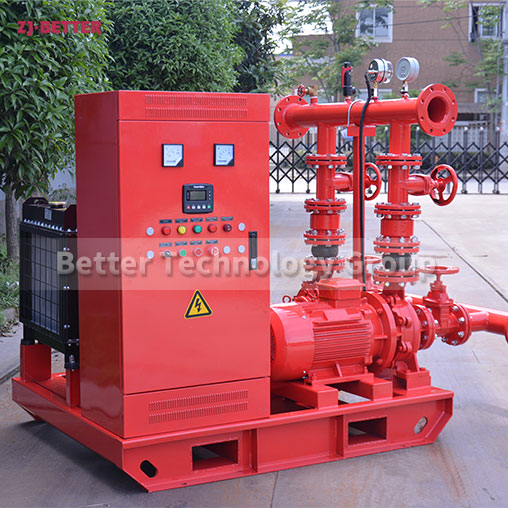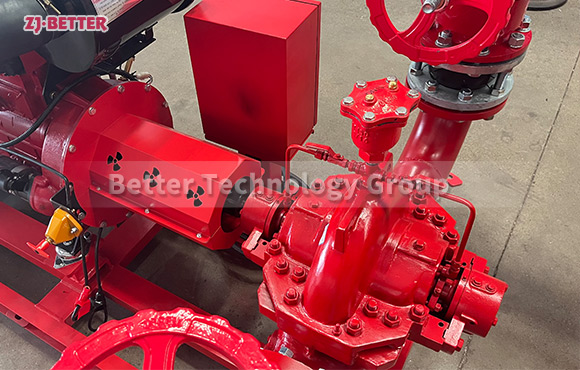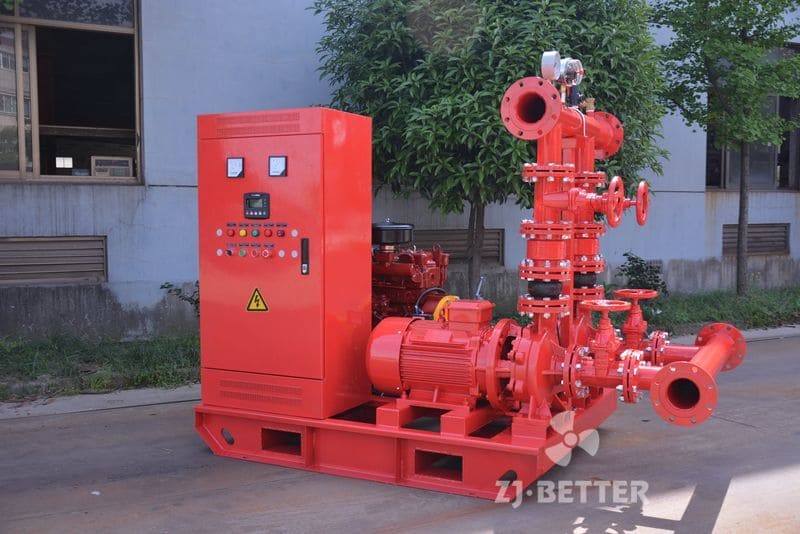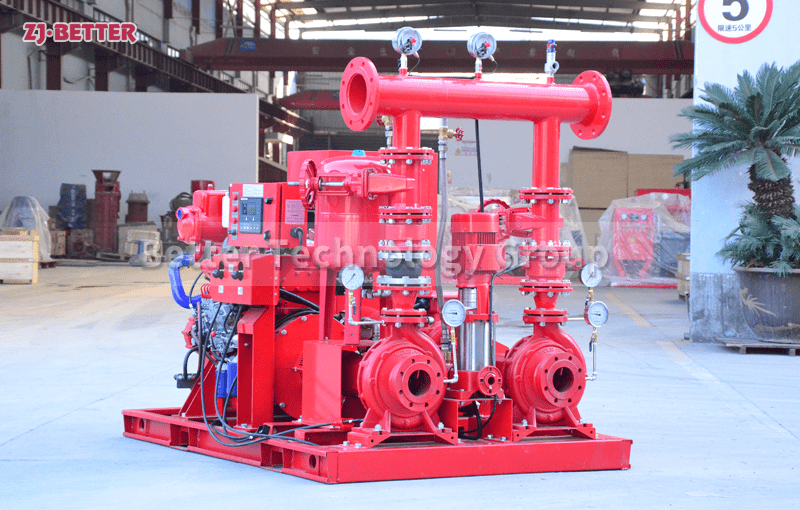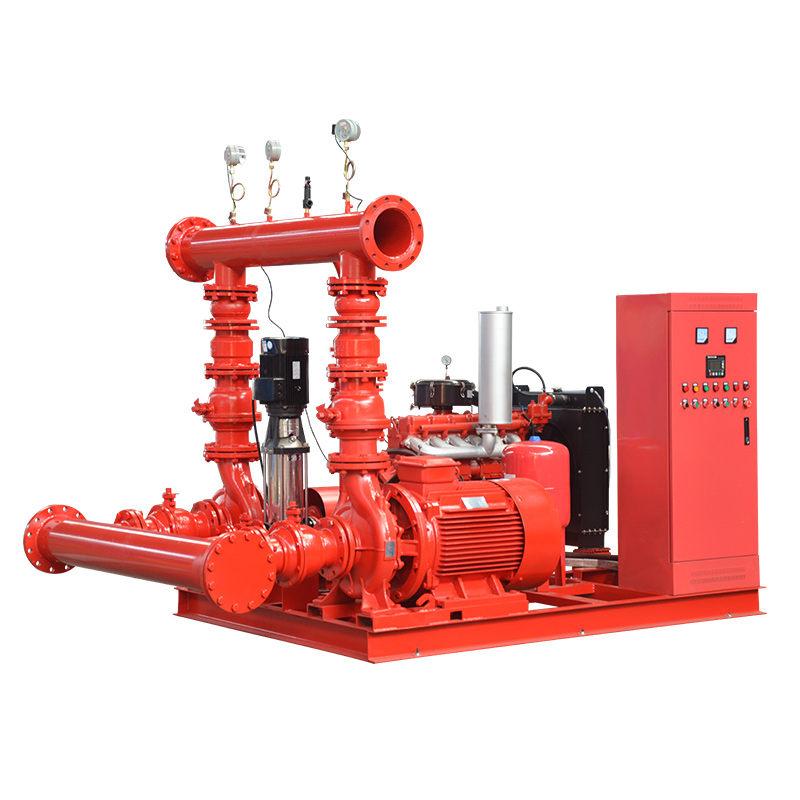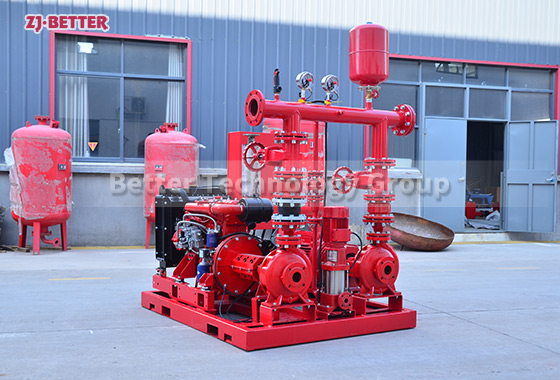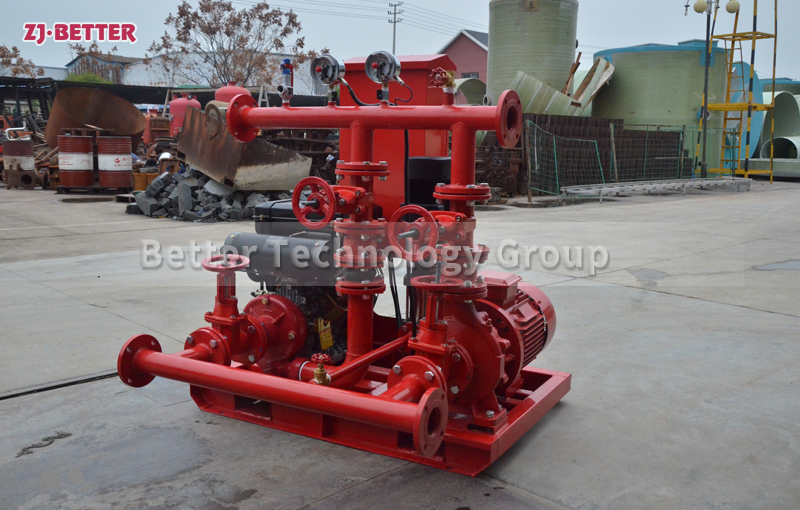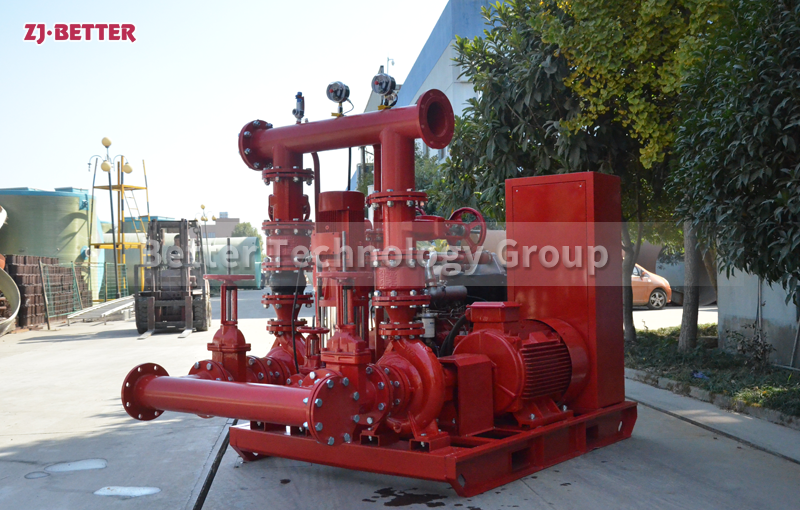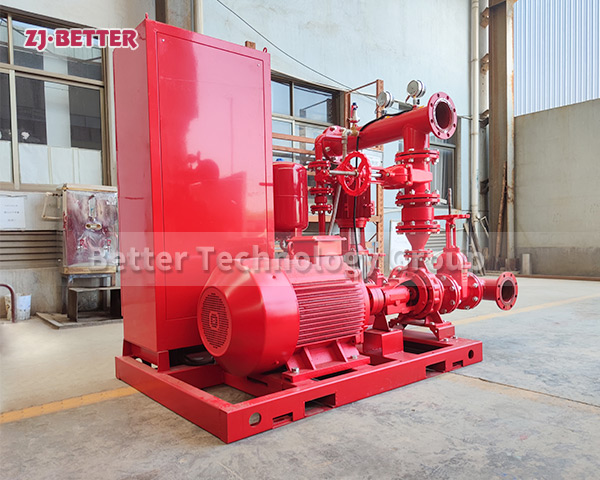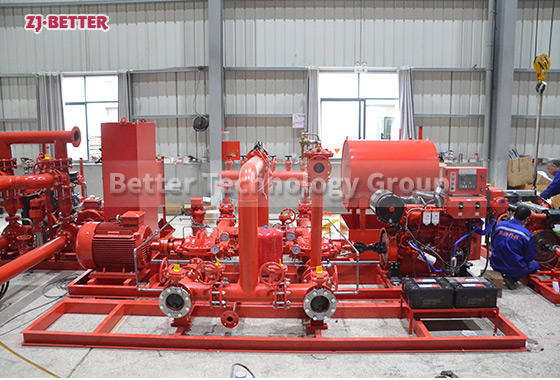Diesel Pump With Control Cabinet
Diesel engine fire pump, as a fixed fire extinguishing equipment, has been widely used in fire diversion, especially in the case of no power supply or abnormal power supply and other emergencies, other diesel engines can also be equipped as power engines according to the needs of users.
Diesel engine fire pump is mainly composed of diesel engine, fire pump, coupling, fuel tank, radiator, battery pack, intelligent automatic control panel, etc. Our factory has rich production experience and perfect testing methods to ensure the stability and reliability of product quality. The diesel engine fire pump adopts international advanced technology and gantry type body, sliding bearing, plate-fin type air cooler, upper heat exchanger, spin-on oil filter and dual cooling system.

